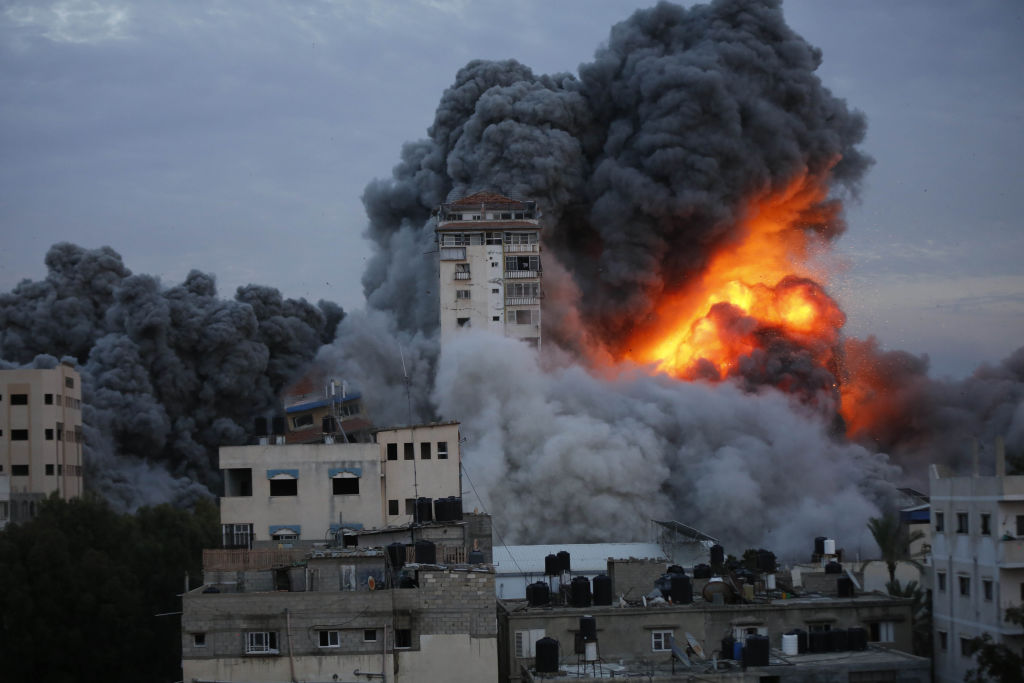
The history of Israel has often been a history of conflict. A partial list includes the 1948 Arab–Israeli War that followed Israel’s birth, the Israeli–British–French attempt in 1956 to seize the Suez Canal and topple Egypt’s Arab nationalist leader, the 1967 Six-Day War, the 1973 Yom Kippur War, and Israel’s invasion of Lebanon in 1982. There are also the two Palestinian intifadas and numerous smaller conflicts.
To this list must now be added Hamas’s October 2023 invasion of Israel. Thousands of short-range rockets were launched from Hamas-controlled Gaza against towns and cities in western Israel. Hundreds if not thousands of Hamas fighters crossed into Israel by breaking through defensive barriers, flying over them or sailing around them.
The human toll of these attacks is enormous and growing. More than 900 Israelis have lost their lives. Several thousand have been injured. Some two hundred Israelis attending a concert were killed in cold blood. At least 100 have been abducted. It was terror—the intentional harming of innocents by a non-state actor—on a large scale.
It was also a colossal Israeli intelligence failure. The most likely explanation for Israel’s being caught unprepared is less a lack of warning than a lack of attention. As was the case in 1973, the attack has demonstrated that complacency and an underestimation of the adversary can be dangerous.
It was a defensive failure as well. Deterrence broke down. Expensive physical barriers were overrun. Israeli military readiness and troop levels were woefully inadequate, possibly because attention had shifted to protecting settlers in the occupied West Bank. There will surely be official inquiries and independent investigations.
Why Hamas attacked remains a subject of debate. The most likely explanation is that the group wanted to demonstrate that it alone—not the Palestinian Authority that rules the West Bank and not Arab governments—is able and willing to protect and promote Palestinian interests.
The timing of the assault is another matter. It’s possible that the date was chosen to coincide with the last successful surprise attack against Israel, carried out by Egypt and Syria 50 years ago almost to the day. But the planning and training for the attack took place over months, which suggests a strategic purpose not tied to a specific event. The timing may have been motivated by a desire to disrupt the growing momentum in negotiations to normalise diplomatic relations between Israel and Saudi Arabia, an outcome strongly opposed by Iran, the principal backer of Hamas. Hamas may also have sought to take advantage of Israeli political divisions. Or all of the above.
The Hamas attackers took hostages back to Gaza for two reasons: to limit Israel’s freedom of action lest those individuals be placed at even greater risk, and to exchange them for Hamas operatives held in Israeli jails.
Israel now faces an acute dilemma. It wants to deal a decisive blow to Hamas, both to weaken the organisation militarily and to discourage future attacks and Iranian support for them. And it wants to accomplish this without bringing Hezbollah, which has some 150,000 rockets in Lebanon that could reach much of Israel, directly into the conflict. It also doesn’t want the war to expand to the West Bank. Restoring meaningful deterrence without widening the war will be difficult.
There is the additional consideration that Israel’s military options are limited. The hostages are one reason. In addition, occupying—or, more precisely, reoccupying—Gaza would be a nightmare. There are few, if any, military undertakings more difficult than urban warfare, and Gaza is one of the most densely populated urban environments in the world. Many Israeli soldiers would lose their lives or be captured in such an operation.
Massive attacks from the air, designed to avoid the need for a ground invasion, will inevitably kill or injure a significant number of innocent inhabitants of Gaza, thereby decreasing international sympathy and support for Israel. Efforts to shut off Gaza’s supplies of food, water, fuel and electricity will also be counterproductive. Regional and international pressure for a ceasefire would surely mount.
There’s also the question of the operation’s strategic objective. Hamas cannot be eliminated, because it represents an ideology as much as an organisation. Efforts to destroy it risk building support for it. What comes to mind is the 2003 invasion of Iraq and the famous question posed by US Defense Secretary Donald Rumsfeld, who wondered whether American drone strikes on suspected terrorists, which at times killed innocents, were effective. His question—‘Are we creating more terrorists than we’re killing?’—remains worth asking.
All of which is to say that while there must be a military component to Israel’s response to its security challenge, including reconstituting Israel’s ability to defend itself from attacks and targeted strikes on terrorists in Gaza, there is no solely military answer. A diplomatic element will need to be introduced into the equation, including a credible Israeli plan for bringing about a viable Palestinian state.
There’s an American saying that you can’t beat something with nothing. Rewarding those Palestinians who are willing to reject violence and reach an accommodation with Israel is still the best way to marginalise Hamas.

